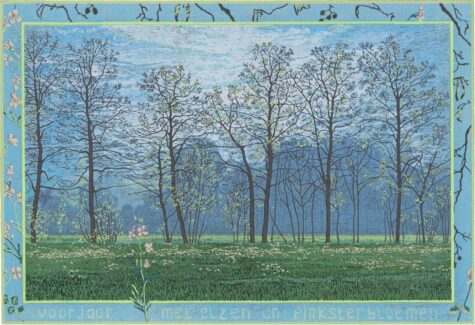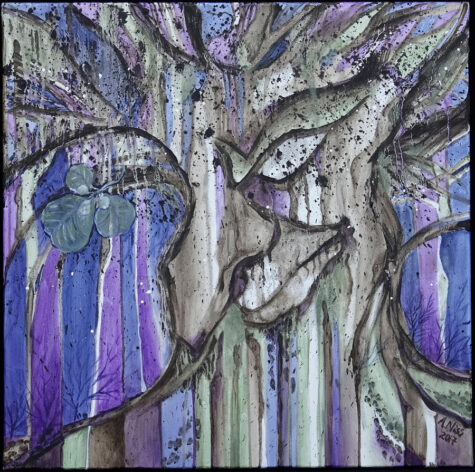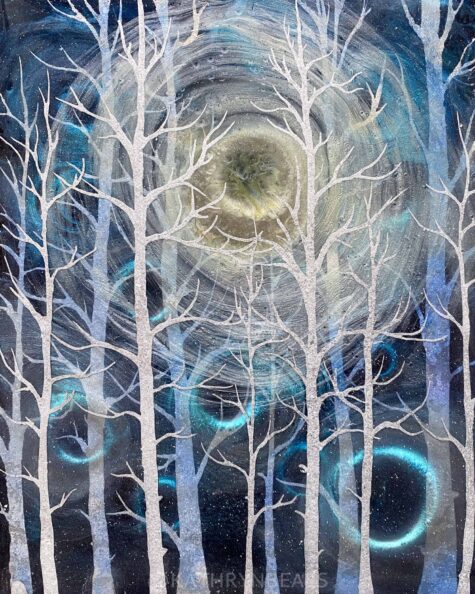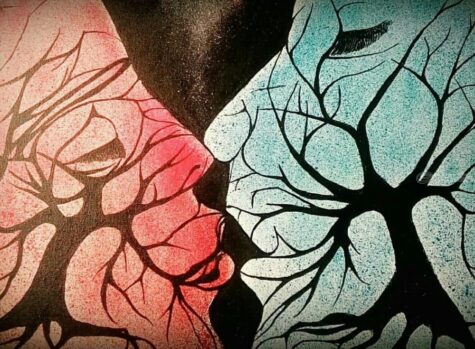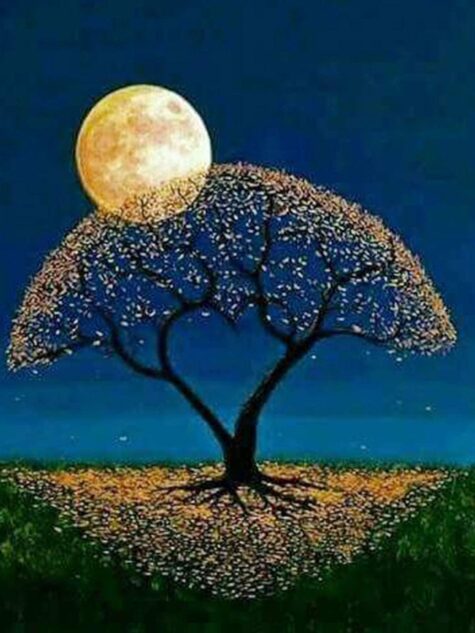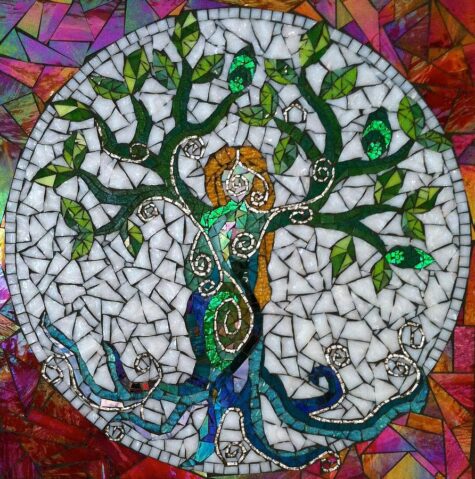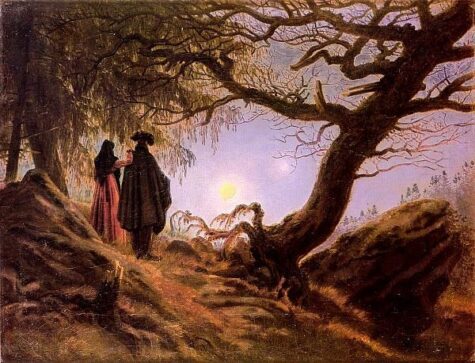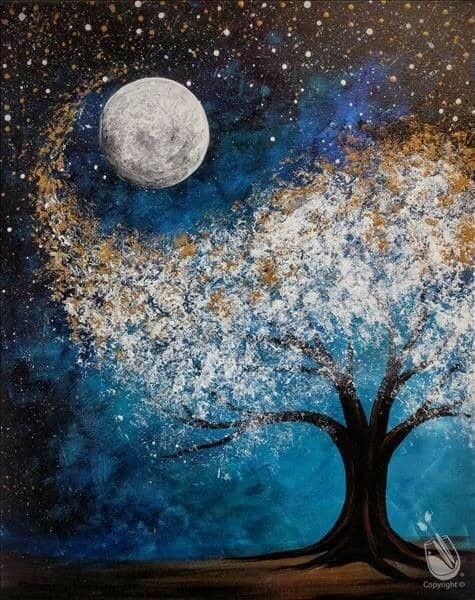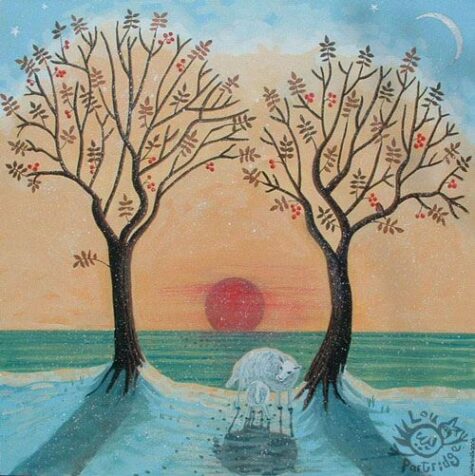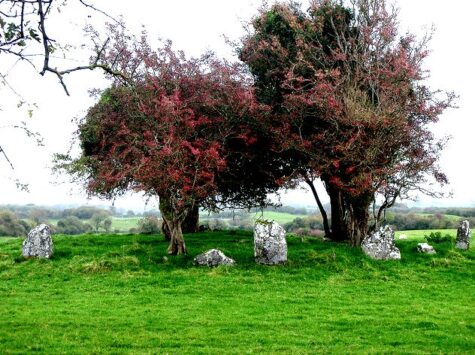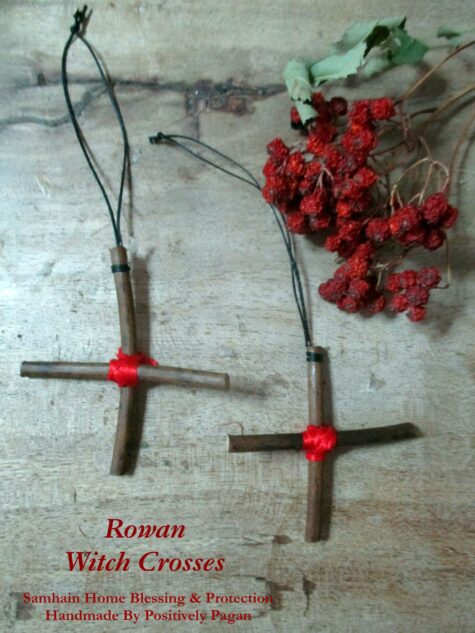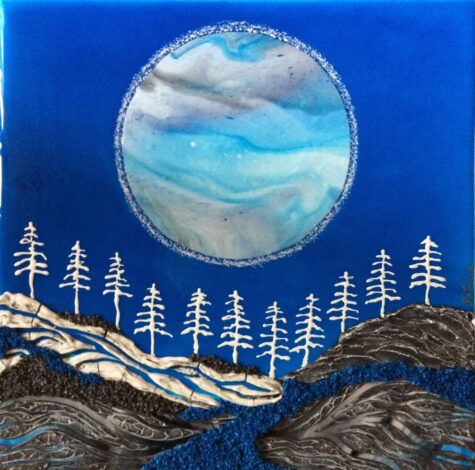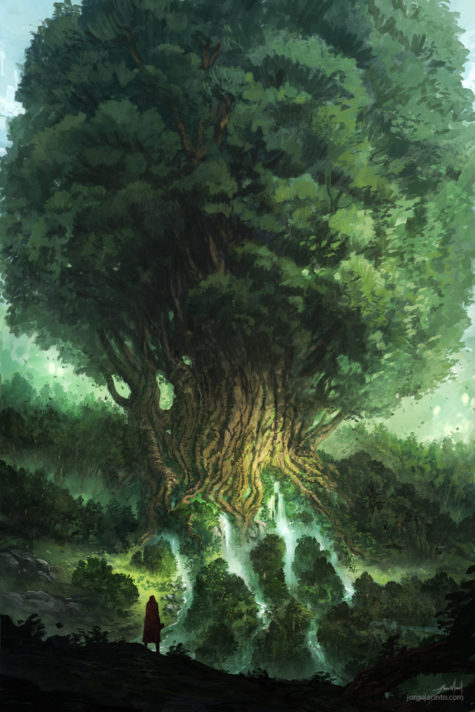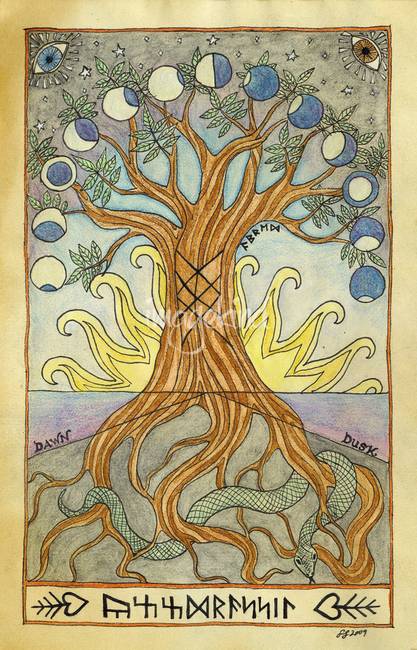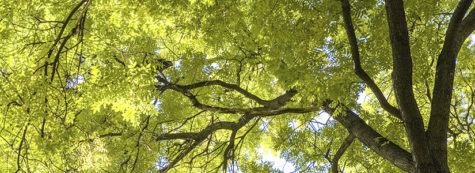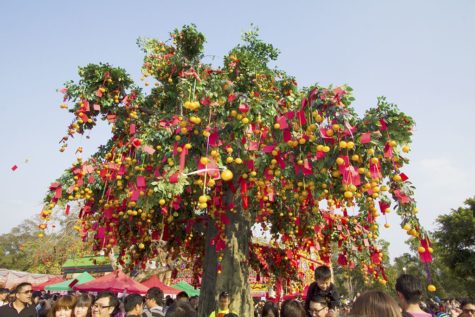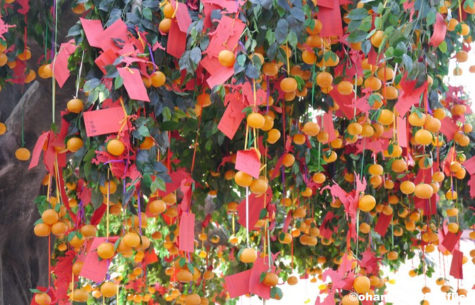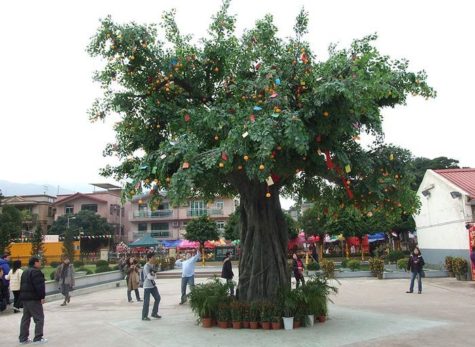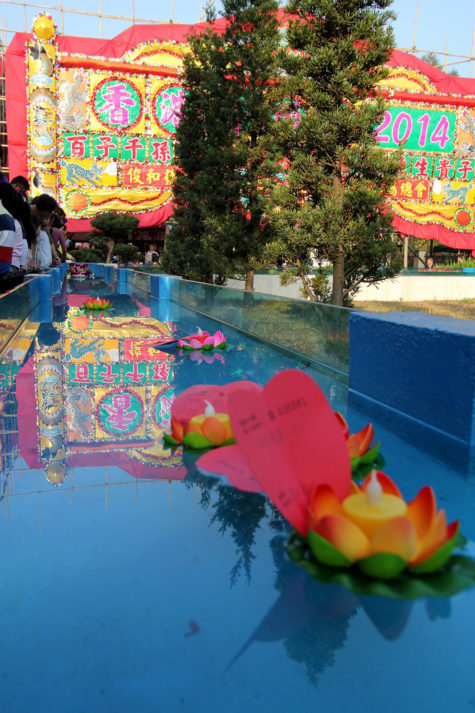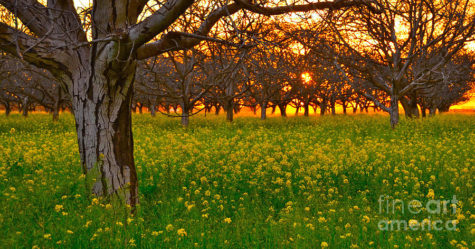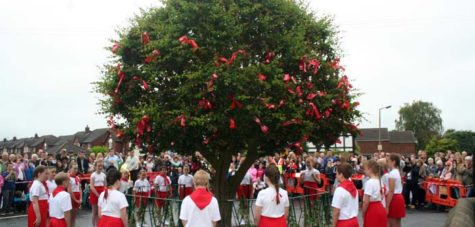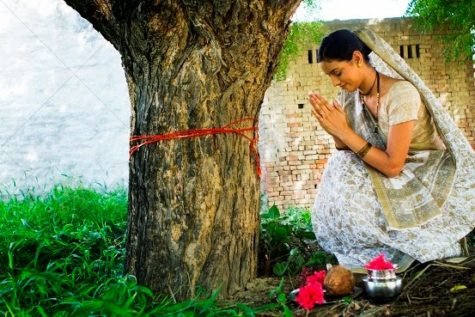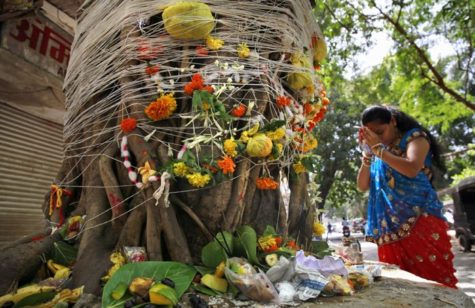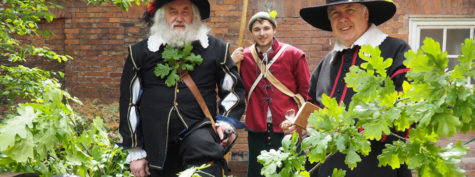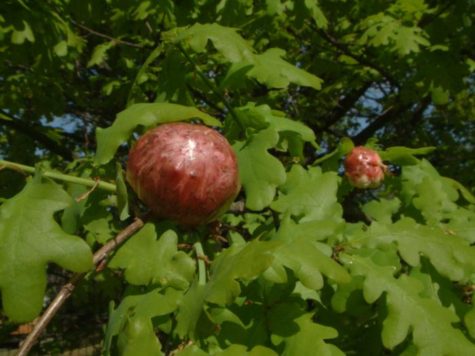Trees
At the time of the Spring Equinox, or Ostara, the Alder is flourishing on riverbanks, roots in the water, bridging that magical space between both heaven and earth. The Alder month, called Fearn by the Celts, and pronounced fairin, is a time for making spiritual decisions, magic relating to prophecy and divination, and getting in touch with your own intuitive processes and abilities.
- Dates: March 18 – April 14
- Celtic Name: Fearn
- Themes: Spirituality, intuitiveness, decisions, divination.
Falling as it does at the start of spring, the month of the Alder symbolizes the reawakening of the Earth Mother’s fertility for another cycle.
The month of the Alder signifies a period of accelerated growth, and the energy your case during this time can aid in business or creative ventures you undertake, bringing your ambitions closer to fruition. Your emphasis should be on harnessing your hidden potential.
Focusing on the Moon’s influence during this month will also help you to being a sense of balance to your work. The power of the Alder Moon will be able to unite your intuitive side with a pragmatic approach to planning.
The month of the Alder is the ideal time to focus on balancing your life, setting new goals for yourself and working to achieve them with energy and enthusiasm. You can bring more balance into you life with the following tips:
- Check your bank balance.
Always overdrawn? Find four ways you can economize this month. Small symbolic steps let the powers of the universe know that you are ready for some big changes. - Balanced Diet.
Are you eating a balanced diet? Remember that your body is a temple. Valuing yourself is the first step to getting what you want. - Balance your emotions.
Take up Yoga or Tai Chi during the Alder Moon. The balance of spirituality and physical exercise stimulates feelings of well-being. Your improved posture will radiate poise and confidence to the outside world.
Alder the Trailblazer
If you were born during the month of the Alder, you are a natural-born pathfinder. You’re a mover and a shaker, and will blaze a trail with fiery passion often gaining loyal followers to your cause. You are charming, gregarious and mingle easily with a broad mix of personalities.
In other words, Alder signs get along with everybody and everybody loves to hang around with you. This might be because Alder’s are easily confident and have a strong self-faith. This self-assurance is infectious and other people recognize this quality in you instantly.
Alder Celtic tree astrology signs are very focused and dislike waste. Consequently, they can see through superficialities and will not tolerate fluff. Alder people place high value on their time, and feel that wasting time is insufferable. They are motivated by action and results.
Other character traits are: a mystic charisma, confidence and strong self-faith, a good focus on goals and ideas. Alders pair well with Hawthorns, Oaks or even Birch signs.
Magick and Lore
The Alder tree is also known as the King of the waters (with the willow tree as its Queen) because its natural habitat is near lakes, rivers and streams. Take your lead from the Alder tree, drink plenty of water and breathe deeply. You will find you have more energy to make your dreams come true this spring.
The Alder tree actually grows with its roots in the water and its branches in the air and for this reason is associated with balancing of female and male energies.
The Alder is commonly used in Faerie magick. It was believed to be an access point to the faerie realms. Alder flowers and twigs are known as charms to be used in Faerie magic. Whistles were once made out of Alder shoots to call upon Air spirits, so it’s an ideal wood for making a pipe or flute if you’re musically inclined.
The wood of the Alder is white when cut but soon starts to turn rusty red, a symbolic bleeding that has linked the trees to supernatural life. The colors of white and red have both been long associated with the Goddess and fertility. The buds of the Alder tree also grow in spirals that are a symbol of regeneration and a reminder of the cycle to come.
The wood also has an incredibly high burning temperature – the highest of any wood which would have been readily available within the British Isles or Ireland. This meant that it was highly prized for forging metal – the amazing Celtic jewelry and weapons would probably have been created in an Alder fire.
Chocolate Love Ritual
Perform this simple ritual with your partner to help your love grow stronger. You will need:
- A chocolate Easter egg
- A pin
- A red candle
- Matches
Create a romantic setting in the room you wish to use for your ritual with soft music and scented candles. Sit facing your partner, look into each others eyes and breathe deeply.
Light the candle, then take it in turns to say these words to each other:
“Beneath this Alder Moon I offer my love to you,
may it grow ever stronger and ever clearer,
so mote it be.”
Both use the pin to scratch four things you love about each other onto the chocolate egg. Have fun feeding each other pieces of the egg. Let the red candle burn down. Your love will grow in the year ahead.
Sources:
In ancient Europe, the winter’s ice began to thaw during the Celtic Month of Ash Moon. People ventured out of their homes and villages for the first time since the darkening days of late autumn. It is perhaps for this reason that this month is linked with journeys of all kinds. Energy directed now should focus on transformation, moving you into a new space either physically or spiritually.
The month of the Ash Moon is a good time to start planning your summer holiday and to acclimatize your body to spending time outside. Cast energy forward that takes your inner energies on an excursion by harnessing natural forces, such as floating wishes downstream in a paper boat, or blessing a feather and letting it fly on the wind. Valentine’s Day also occurs near the time of the Ash Moon, so cast love energy that focuses on sharing your journey in the year ahead with someone special.
- Dates: February 18 – March 17
- Irish/Gaelic name: Nuin, Nion
- Themes: Balance, Endurance, Strength, Protection.
- Language of Flowers: Grandeur
- Qualities: Balance, Stability, Strength, Protection, Connection, Vitality, Fertility, Justice, Wisdom, Connection
- Associated With: Prophetic Dreams and Spiritual Journeys.
Ash is one of our mightiest trees. A huge physical specimen when mature, and also a tree with some of the most impressive myth, meaning and folklore around it.
In ancient Europe, Ash trees were enormous, towering high above the landscape with a thick trunk and deep roots. The Celts interpreted three distinct things from this tree, expansion, growth, and higher perspective. The incredibly complex root system also symbolized remaining grounded despite how much growth was taking place in one’s life.
This belief was perfectly aligned with the esoteric message of the ash. The Druids and the Norse peoples believed all the realms were connected via branches of a giant mystical ash tree known as Yggdrasil.
This World Tree, Yggdrassil, was an almighty ash tree that joined together the heavenly realms in its branches, the earthly realms in its trunk, and the realms of the underworld through its roots.
The spear of Odin was made from the branch of this tree, which is also known by the Celtic name Nion, pronounced knee-un. One of three trees sacred to the Druids (Ash, Oak and Thorn), the month of the Ash tree is a good month to do magic that focuses on the inner self and spells that focus on spiritual journeys, and prophetic dreams.
The wood of the ash tree was used extensively in ritual practices as it burned with an intense heat, even when green. The ash was often the Yule log – feted and decorated as it was brought into the home, farmstead, or inn, fed mead or wine and then burnt on the hearth with the charred remains kept as kindling for next year’s Yule log. The ashes of the Yule log were often used to protect the home from lightning.
The most productive magickal tools are made from the branches of the Ash tree. Ash has also historically been used to make staffs or staves. An early Iron Age find on the Isle of Anglesey in Wales was a staff of ash with a ribbon of copper spiraling around it, thought to be a druid’s staff. It’s also the wood traditionally used for witches’ broomstick handles (birch for the brush part).
Ash is very much associated with rain and water, especially with thunderstorms and their associated downpours. Thor, the god of thunder had a spear of ash. It’s thought that the tall height of the ash tree may attract lightning.
A country rhyme tells us:
“Avoid an ash,
for it courts a flash”
While its association with wet weather is recognized in the old weather lore:
“Ash before the oak,
We shall surely get a soak,
Oak before the ash,
We shall only get a splash”
The Greek god of the sea and storms, Poseidon, was also associated with the ash tree. The Norns watered and tended to the tree and covered its bark with clay to protect it. They also gave the (burnt) fruit of the tree to women in childbirth and so it is associated with childbirth as well.
The ash tree is about balance and stability. Its roots grow to the same size as its branches which means the tree is very stable and grounded with a good inner balance. As the World Tree, it provides balance between the earthly realm, the heavens, and the underworld.
Ash provides strength, endurance, and protects what we hold dear. It is justice, protection, and healing. It is life-giving rain and fertility in spring.
Ash the Enchanter
Free thinkers are born under the Ash Celtic tree astrology sign. They possess vivid imagination, intuition and their second nature is to be artists. They can see the world crystal clear, but have the tendency to be moody and withdrawn at times. Don’t think that they have some sort of a bipolar disorder. It’s all due to the fact that their inner world is constantly moving and changing.
These enchanters from the Ash sign are drawn towards art, writing, spiritual matters, and even science. Good partners for this Celtic tree astrology sign are the Willow and Reed signs.
Walking meditation
Practicing this technique during the Ash Moon will free your mind from stress and attract solutions to your problems. You will need a smudge stick, a bunch of herbs – usually white sage – that is used to ‘smudge’ or cleanse an area with smoke.
Light a smudge stick, then take time to relax and breathe deeply. Direct the smoke around your body, taking time to cleanse your aura, and say,
“Spirit I walk this journey and invite you to join me.
May each step be sacred.”
Set out on a walk that takes you through nature. Everything on your journey has a message for you, so relax and enjoy it.
On your return write down any animals you encountered and unusual sights or flashes of inspiration you received.
Sources:
This point in the agricultural calendar is marked by the ploughing of the soil to allow it to prepare for the seed, and any energy work performed now is all about groundwork. The surface of the earth appears barren, but the life force is stirring beneath. Ask yourself what you need to prepare in order to plant the seeds of your dreams this year.
The Celtic fire festival of Imbolc (2 February) falls in the Rowan Moon, lending this time associations with the goddess Brigid to whom the festivities are dedicated. This is the perfect time to perform initiations and for spells of power and success.
- Dates: January 21 thru February 17
- Celtic Name: Luis
- Language of Flowers: Prudence
- Qualities: protection, magical, healing, light, spring,
- Color: White
- Themes: Hearth and Home, Family, Personal Power, Spirituality, Success, Protection.
Known as the Bride, Brigid represents the mother of the new-born Sun and all candle energy work is sacred to her. Like the snowdrops peeking out of the ground to meet the goddess, white is a powerful symbol during this month.
During the Rowan Moon wear white to cast energy, use white candles and feast on white foods to attune to the season. Begin spring cleaning now. As the light increases, you will need to clear out your clutter with all your energy to make way for new growth. Have a Rowan Moon dinner party and ask your guests to wear white, dine by candlelight and eat seeds such as beans, pulses and nuts.
Look for the first snowdrops of the season and make a wish when you see one. Snowdrops hold the potential of spring. Tie a white ribbon on a rowan tree while saying the names of those you love. The tree will send out healing vibrations to them.
Known by the Celts as Luis (pronounced loush), the Rowan is associated with astral travel, personal power, and success. A charm carved into a bit of a Rowan twig will protect the wearer from harm. The Norsemen were known to have used Rowan branches as rune staves of protection. In some countries, Rowan is planted in graveyards to prevent the dead from lingering around too long.
Rowan the Thinker
Rowan is the philosophical sign of the Celtic zodiac. People born under this Celtic tree astrology sign tend to be keen-minded visionaries, with creative thoughts and high ideals. They tend to be aloof and often feel like other people don’t understand them. However, the Rowan signs are full of energy and devotion and are passionate when it comes to persuasion. The Rowan from the Celtic tree horoscope is compatible with the Ivy and Hawthorn signs.
The rowan tree is known for balance, clarity, vision, protection, divination, and transformation. For those who believe that the trees speak to us when we listen with complete silence, the rowan tree whispers encouragement to look deeper, look beyond the focus of your worldly eyesight to go beyond the physical world and engage with worlds beyond that which we are comfortable with.
Another amazing lesson to be found in the rowan tree comes from observing where they grow and how determined they are to survive, even at times sprouting up within other trees. Some see this as an analogy for us to find connections in unexpected places.
Rowan Magick and Lore
The beautiful rowan is one of our most beautiful and colorful trees – with frothy white blossoms in spring, delicate feathered leaves, and colorful red autumn berries. It’s also traditionally considered as one of most magical trees!
The Druids believed the rowan tree contained a spirit that had secret knowledge of immortality and personal freedom. In Norse mythical tales, it’s said that the rowan saved the life of the god Thor as he was being swept away in the river Vimur – he caught hold of a rowan tree on the bank and pulled himself to safety.
In ancient Celtic mythology, rowan was considered as the mythical ‘tree of life’ – the tree of life bears life-giving fruit each month and at the quarter of the year. The magical berries of the tree could sustain, heal, and prolong life.
Icelandic myth gives the rowan tree a connection with light – there, the rowan is a tree of the winter solstice. The frost glistening on midwinter rowan trees in moonlight fills these magical trees with tiny stars and links to ancient traditions of magical ‘moon trees’ decorated with lights (stars). The star-lights in the rowan bring the light energy of the spirit of the returning year in that important solstice moment of darkness as the year turns from darkening to lightening.
The traditions tell of a special star glowing atop the rowan tree – an ancient rite that’s surely influences our modern tradition for topping our own winter solstice trees (Christmas trees) with a star.
A Rowan Witch Cross
This protection charm represents the waxing energies of the Sun and can be hung in the home to attract good luck.
Collect together two straight sticks of rowan wood. Remember to leave an offering of thanks on a breach, such as a strand of hair, or thread or ribbon.
Hold the sticks in a cross and say,
“Spirits of this wood,
I bring you together for the good of all.”
Now bind the sticks into an equal-armed cross and secure them with red thread. As you do this visualize a powerful white light.
Hold the charm up to the Sun and say:
“Behold the Wheel of Brighid,
Blessed be.”
Sources:
The first of the 13 tree months of the Celtic calendar is the month of the Birch Moon. It begins just after Yuletide, and runs through most of January.
Starting just after the Winter Solstice – the shortest day of the year – the month of the Birch Moon marks the period of the year when the hours of daylight start to increase over the hours of darkness. Its associated color is flame red. From this comes the red candles that we burn at Yuletide. The birch is a popular Yule log, clearing the Old Year away to make way for the new.
- Dates: December 24 thru January 20
- Celtic Name: Beith, Beth
- Language of Flowers: Meekness
- Color: Red
- Themes: New Endeavors, Creativity, Fertility, Healing, Protection.
The Birch Moon is a time of rebirth and regeneration. As the Solstice passes, it is time to look towards the light once more. When a forested area burns, Birch is the first tree to grow back. The Celtic name for this month is Beth, pronounced beh.
Workings done in this month add momentum and a bit of extra “oomph” to new endeavors. The Birch is also associated with magick done for creativity and fertility, as well as healing and protection. Tie a red ribbon around the trunk of a Birch tree to ward off negative energy. Hang Birch twigs over a cradle to protect a newborn from psychic harm. Use Birch bark as magical parchment to keep writings safe.
Beth, the Birch month, is a time of regeneration and new projects. This is the perfect time to go back to the light once more as the Sun makes a comeback. The Birch tree is the first tree to grow back after a forest fire. This month is the best for spells related to creativity, healing, protection, and fertility.
Birch the Achiever
If you were born in the month of the birch, you probably have a fresh and unusual outlook on life. People born under this Celtic tree astrology sign tend to be highly driven and are always full of zeal and ambition. They always want more and try to reach new horizons and expand their knowledge.
Some of the characteristics attributed to the Birch sign are tolerance, toughness, and leadership. The Birch signs can brighten a room with their smile and quickly charm other people. This sign of the Celtic zodiac is compatible with the Vine and Willow signs.
Throughout history the birch tree was known for it’s adaptability, sustaining itself in even the harshest of conditions. It is the first tree to sprout leaves after the winter and the first to regrow after fire or other natural disaster. Some liken it to the pioneer spirit, courageously taking root in harsh and unknown lands. It is a symbol of renewal at the highest level and demonstrates a fierce and unfailing ability to not only survive, but also to prosper and multiply.
People born under this Druid zodiac sign may exhibit many of the characteristics of the tree such as strength, tenacity, resilience, stability and perseverance.
Birch Magick and Lore
Birch is one of our most beautiful native British trees and one of the most mystical! Birch is often seen as a ‘pioneer tree.’ It was the first tree to start to recolonize the land after the last Ice Age and is, even now, often the first to start to grow on cleared lands or wastelands…
And it provides nourishment for the plants and trees that come after to allow the natural ecosystem to regrow. Because of this, birch is often associated with renewal and new beginnings.
In the Tartar culture, the birch tree stands at the centre of the world. The Siberian Buryat people name birch ‘the guardian of the door’ and believe that the birch can provide access to the nine great celestial realms.
The Siberian Yakut culture associate the birch with ‘Ai Toyou’ the ‘bringer of light’ who lives in a birch tree with its branches filled with nests of children.
The association of birch with light is a powerful one – the beautiful silver-white bark reflects light and appears particularly striking and ethereal by moonlight, especially on those dark winter nights when the trees stand bare of leaves.
Birch is associated with the Celtic god of light, Lugh. And legend tells that birch – ‘beith’ – was the first letter of the Celtic tree alphabet – the ogham – ever written. The letter ‘beith’ was carved seven times onto a piece of birch by the god Ogma so that he could warn the god Lugh that his wife had been taken by fairies. It also served as a protective talisman for Lugh as he sought for his wife.
In the Celtic world, birch trees are also associated with the Northern Lights, the Aurora Borealis – you can imagine the ethereal beauty of the scene with these dancing lights reflected in the silver birch bark – and through this association, with the Celtic goddess Arianrhod who has her throne in the ‘corona borealis’, ‘the crown of the north wind’. Celtic women are thought to have traditionally used birch to ask for Arianrhod’s assistance in childbirth (a time of new beginnings).
Simple Cold Moon ritual
Light a white candle beside a small bowl of natural spring water. Stand over the water and pray for the strength to let go of your vice. Write down your negative behavior nine times on a piece of paper. Fold up the paper, place it inside a freezer bag, and pour in some of the prayer water. Place the bag inside your icebox to ‘freeze’ your bad habits – putting them behind you forever.
Sources:
Yggdrasil Day is celebrated either on April 22 or on the last Friday in April. It is not an old Northern tradition nor an ancient pagan celebration, it is a fairly new holiday in the Neopagan tradition and an alternative to Arbor Day.
This day is a time to contemplate the place of humankind within the nine worlds, and to celebrate the blessings of nature, often shown by planting a tree. This is also a time to celebrate one’s culture, heritage, and spirituality.
Regardless of faith, Yggdrasil Day is a great opportunity for anyone to give back to nature and recognize our inter-dependency on both one another and the natural world.
Arbor Day is all about trees, and their importance here on our tiny blue world. I am not sure how many trees are planted on this day worldwide, maybe millions, but none can compare to the greatest tree that was ever planted, Yggdrasil. Arbor Day is another one of those secular celebration days that I have borrowed, and use to honor something, or someone, in our great pantheon of Gods and Goddesses.
Today for me is Yggdrasil Day. A day to honor our Great World Ash for all that it does and means to us Midgardians. If you consider it to be an actual tree, or just some cosmic force that holds the nine worlds together is a matter for a later discussion. Either way it is to us, who follow the Old Ways, the great tree of life that binds our nine world cosmology together as one cohesive structure.
Let us not forget also that we here on Midgard have another very strong connection to trees in our lore. I quote from Voluspa,
“Until three of the Aesir assembled there, strong and benevolent, came to the sea. They found on the shore two feeble trees, Ask and Embla, with no fixed fate.”
Gylfaginning finishes the story:
“And they picked these up and created men from them. The first gave them spirit and life, the second understanding and power of movement, the third, form, speech, hearing and sight. They gave them clothes and names.”
The Gods gave life to the trees, and mankind was therefore born. Voluspa gives us a wonderful description of the Great Ash Tree:
“There is an ash tree, its name is Yggdrasil. A tall tree watered from a cloudy well. Dew falls from its boughs down into the valleys. Ever green it stands beside the Norn’ s spring.”
The importance and sacredness to the Gods is shown in Gylfaginning when Gangleri asks : ” Where is the chief place, or sanctuary of the Gods? ” High One replies: ” It is by the ash tree Yggdrasil. There every day the Gods hold court. ”
The High One then goes on to give the best description of Yggdrasil.
“The Ash is the best and greatest of all trees, its branches spread out over the whole world and reach up over heaven. The tree is held in place by three mighty roots that spread far out. One is among the Aesir; the second among the Frost Ogres, where once was Ginnungagap; the third extends over Niflheim, and under that root is the well Hvergelmir. But Nidhogg gnaws at the root from below. Under the root that turns in the direction of the Frost Ogres lies the Spring of Mimir, in which is hidden wisdom and understanding. The third root of the ash tree is in the sky, and under that root is the very sacred spring called Urd. There the Gods hold their court of justice.”
The High One adds later on:
“There is a great deal to tell about it . In its branches sits an eagle, and it is very knowledgeable. Between its eyes sits a hawk called Vedrfolnir. A squirrel named Ratatosk springs up and down the Ash and conveys words of abuse between the great eagle and Nidhogg. Four harts leap about the branches of the Ash and eat the shoots. And along with Nidhogg there are so many serpents that no tongue can count them.”
Yggdrasil is the cosmic World tree, and Ash tree, that binds this world to the others, to the world of the gods, of the spirits and ancestors, it is the symbol of our union with nature. In Nordic mythology, it was an ash tree known as Yggdrasil, the cosmic tree that symbolizes the center of the world, that Odin hung for nine days and nine nights in trance, received the sacred knowledge of runes, the Elder Futhark.
Yggdrasil has always played an important role in the lives of the Northern people of Europe. We have all came from nature and we will all return to it one day, so at this day we honor the forces of nature and we will always remember how important is to protect the world we live in.
Trees are the lungs of our world just has it is Yggdrasil in the Nordic cosmology, it is the shelter that gives us peace and protection, it is the spiritual path of the Gods and of our ancestors, the way which leads to the other worlds. And so as nature gives us these gifts, in turn we must honor it, and because a gift calls for a gift, in turn we must give to nature our protection, our care and our respect. In this day you should plant a tree, you should become the protector of those who have given you shelter, fight against the evils that are corrupting our natural world.
Celebrating Yggdrasil Day:
I honor the Great World Ash Yggdrasil every year on Arbor Day, the last Friday in April, with a full ritual, and by placing a new Valknut, Thor’s Hammer, or rune stone necklace on the branches of my artificial 6 ft. white ash tree that I have sitting next to Odin’s altar in my living room. I think it is very appropriate that the Great Ash sits next to the All – Father’s altar because of his many connections to Yggdrasil. I do not celebrate Christmas so to me this wonderful 6 ft. ash tree, with all its shining jewelry hanging in the branches, evokes the same emotions of joy and wonder that I used to experience as a child on Christmas morning.
The best thing is I get to experience it 365 days a year because I never take down the tree. It honors me with its presence, and I honor it with my presents, day after day, year after year. I found the 6 ft. ash at Amazon. com for about $ 300.00. It was definitely worth the money !
This year I am going to present the Great Ash with a very special gift that I found at the Scandinavian Festival last year. It is a beautifully carved Thor’s hammer. This white Thor’s hammer is hand carved out of bone, and has beads on either side of the Hammer. It looks kind of tribal ! It will make a beautiful addition to the dozen or so necklaces already hanging in its holy branches.
Coming just a week after Jord’s Day, ( Earth Day ), it is fitting to have a day to honor Yggdrasil, and to re- seed the earth with seedling trees. Planting trees is not only a great way to honor Mother Jord, and Yggdrasil, but it is also a wonderful gift for future generations of mankind. I cannot imagine a world without trees, and there would be no nine world universe without Yggdrasil the Great Nine World Ash!
More about the Ash Tree
The Ash tree – Fraxinus Excelsior is also known as guardian tree in all of Europe. With the exception of the Mediterranean region, this tree can live till three hundred years. Its leaves appear after its flowers and this strange detail led this tree to be know as the “Venus of the woods”. Its roots penetrate deeply into the ground causing difficulty to other kinds of vegetation to grow in there. Due to the hardness of its wood, it has been widely used for the manufacture of lances and tool handles. Thus it is possible that the name of this tree in English, derives from the Anglo-Saxon word Asec, which means “Ritual Spear.”
Celtic Druids once used the wood of these trees, to make their rods and staffs.
Traditionally the yule log (At the winter solstice) is of ash tree, this is because it is one of the few woods that can burn immediately, even though it is still green, and offers an excellent and long-lasting illumination.
The Icelandic word Aske, which has similarities with Ash, means “fire with large flame.” This tree is also sacred to the gods Thor and Odin.
Sources:
Every year, Lam Tsuen holds the Hong Kong Well-Wishing Festival. It part of the Chinese New Year celebration which attracts hundreds of thousands local citizens and tourists from all over the world. (In 2019, the festival runs from February 5 through March 3rd). Various activities at the festival include throwing wishing placard, setting wishing lanterns to make wish, joining international float exhibition, shopping in food carnival and setting lantern light to celebrate new born babies.
The Lam Tsuen Wishing Trees are a popular shrine in Hong Kong located near the Tin Hau Temple in Fong Ma Po Village, Lam Tsuen. The two banyan trees are frequented by tourists and locals during the Lunar New Year. Every year, wish-makers flood to Lam Tsuen for good fortune. The Lam Tsuen Wishing Trees are said to have the magic power to make a wish real.
The Lam Tsuen Wishing Tree was originally a camphor tree and later a redbud tree. The present Lam Tsuen Wishing Tree refers to an at least 200 year old banyan tree at the entrance of Lam Tsuen. There is also a newly planted banyan tree inside the village and a plastic Wishing Tree.
Lam Tsuen Wishing Tree has long been regarded as a deity by locals, who light candles and burn joss sticks at the root to worship the god. It is a tradition to make red or yellow papers on which people would write down their names, dates of birth and wishes, and roll the papers and tie them with weights (usually an orange) and finally toss them up onto the Wishing Tree. The paper scrolls are called “Bao Die.” Legend has it that if the “Bao Die” does not fall down, a wish would come true. Otherwise, the wish is said to be too greedy.
The Lam Tsuen Wishing Tree at the entrance was covered with “Bao Die” all the year around. As a result, it became extremely fragile. This practice was discouraged by the authorities after 12 February 2005, when one of the branches gave way and injured two people. Instead, wooden racks are set up in place for joss papers to be hung while a period of conservation is imposed to help these trees recover and flourish. Due to the lack of attractiveness of the attraction, A new plastic tree from Guangzhou was purchased in late 2009, plastic mandarin oranges are now only allowed to be tied to the branches. The tradition was able to continue since then.
There are four wishing trees in Lam Tsuen. Different trees symbolize various wishes. The first tree prays for career, academic and wealth. The second tree is for marriage and pregnancy. For the third tree, it states anything can be prayed. Yet, the fourth tree is believed to be most special. It is a fake 25-foot wishing tree made of plastic. Most people make wishes on the plastic Wishing Tree. This plastic fake wishing tree allows worshipers to throw their wishes to the tree.
A traditional “ Bao Die “ includes an orange and it ties with a yellow paper. Worshipers can write their name, date of birth and wishes on the yellow paper and throw it to the wishing tree. If you can successfully throw the “Bao die” and it hangs up on the tree or its branches, the myth said your wishes can come true. However, if it drops, the legend reckoned that your wishes are too greedy. But still, if the “wishes” drop, do not give up, try more and keep throwing until you make your wishes success.
There are lots of interesting stories about Lam Tsuen Wishing Tree. Lam Tsuen wishing tree was an ordinary camphor tree where a tablet for enshrining and worshipping Pak Kung was placed. As years passed, the branches and leaves gradually withered and eventually it became a hollow tree. People started to believe that Lam Tsuen wishing tree was magical after a legend: a man whose son had had a slow learning progress made a wish to a hollow tree. After that, his son’s academic performance has shown drastic improvement.
Another popular legend goes that the original wishing tree was huge with holes in the trunk. When people came to worship it and burn joss sticks, there would be oils flowing down form the holes. Unfortunately, the tree broke down after a fire accident. Surprisingly, before its death, two redbud blossoms appeared on the tree and grew rapidly. Soon the two blossoms were even bigger than the whole wishing tree.
In 2011, a Wishing Well was founded beside the wishing trees. The Wishing Well is a rectangle water channel flanked by glass with a length of 4 meters. The public can write down their wishes on paper, put it into a lotus-like lamp and drift the lamp on water to make a wish.
Sources:
Tu Bishvat occurs on the 15th day of the Hebrew month of Shevat. In 2019, this date falls on January 20. Tu Bishvat (Tu B’Shevat), also called “Rosh HaShanah La’Ilanot” (New Year of the Trees) is kind of like a birthday for all trees. Trees planted before this day, even by one day, will turn a year older on Tu Bishvat. Traditionally fruit from trees may not be eaten for the first four years, so the age is important.
Here are some simple ways to celebrate The New Year of the Trees
- Pick fresh fruits and vegetables at a local farm.
- Plant trees, seeds, or start an herb garden.
- Build a birdhouse to hang in a tree.
- Eat the seven significant species of the land of Israel: wheat, grapes, barley, figs, pomegranates, olives, and dates.
- Organize a park clean-up to collect litter.
- Make something for your home with reclaimed wood.
- Take some time to research your own ancestry and assemble your family tree.
- Commit to recycling paper goods. If you don’t already have one, get a separate bin and you’re all set!
- Host a Tu B’Shevat Seder.
In the 16th century, the kabbalist Rabbi Yitzchak Luria of Safed developed a Tu Bishvat seder. The fruits and trees of Israel were given symbolic meaning. Eating ten specific fruits and drinking four cups of wine in a specific order while reciting blessings would bring people and the world closer to spiritual perfection.
How to Lead a Tu Bishvat Seder
Set up your table as for Passover: white or other nice tablecloth, good dishes, flowers, wine, and juice. There is no requirement to light candles, but scented candles add a nice touch and a festive glow. Either one person can lead the seder, reciting each reading and making the blessings, or everyone can take turns.
The directions concerning which fruit to locate and the mix of the wines should be read aloud. As each piece of fruit and each cup of wine is being considered and blessed, that object is held by the reader. After each blessing, the participants taste the fruit or sip the wine.
Hand Washing
Fill a large bowl with flower-scented water and float a small cup in it. Carry the bowl from person to person or set up a washing station in a corner. Feel how nice it is to place your hands over the bowl and have someone pour warm water over your fingers. Have towels ready.
Say this blessing
Barukh ata Adonai,
Eloheinu Melekh ha-olam,
asher kidshanu b’mitzvotav,
v’tzivanu al netilat yadayim.
Blessed are You,
Source of all life,
Who commands us to ritually wash our hands.
Note: Some may choose to forego this blessing, since it is traditionally recited upon washing the hands before eating bread, which is not eaten here.
First reading
Reader: And God said: Let the earth put forth grass, herb-yielding seed, and fruit-tree-bearing fruit after its own kind, wherein is the seed thereof, on the earth. (Genesis 1:11)
Reader: In the 16th century in northern Israel, in the spiritual town of Tzfat (Safed), the Jewish mystics created the Tu Bishvat seder. They recognized the many and varied dimensions of God’s creation and used the fruits of Israel to symbolize their existence.
The First Cup of Wine
This cup of white wine or grape juice symbolizes winter and the mystical dimension of atzilut, or emanation, at which God’s energy infused the creation process with initial life.
Barukh ata Adonai,
Eloheinu Melekh ha-olam borei peri ha-gafen.
Blessed are you,
Source of all life,
Creator of the fruit of the vine.
Reader: For Adonai your God is bringing you into a good land. A land of brooks of water, of fountains and depths springing forth in valleys and hills, a land of wheat and barley and vines and fig trees and pomegranates, a land of olive trees and honey, a land wherein you shall eat without scarceness, you shall not lack anything in it; a land whose stones are iron and out of whose hills you may dig brass. And you shall eat and be satisfied, and bless God for the good land, which is being given unto you (Deuteronomy 8:7-10).
The First Fruit
Fruit that is hard on the outside and soft on the inside, such as walnuts, coconuts or almonds. The hard shell symbolizes the protection that the earth gives us and reminds us to nourish the strength and healing power of our own bodies.
Barukh ata Adonai,
Eloheinu Melekh ha-olam,
borei peri ha-etz.
Blessed are You,
Source of all life,
Creator of the fruit of the tree.
The Second Cup of Wine
This cup of wine or grape juice is mostly white, with a little red mixed in, to symbolize the passing of the seasons and the mystical concept of formation and birth, often associated with water.
Barukh ata Adonai,
Eloheinu Melekh ha-olam,
borei peri ha-gafen.
Blessed are You,
Source of all life,
Creator of the fruit of the vine.
Reader: Blessed shall you be in the city, and blessed shall you be in the field. Blessed shall you be in the fruit of your body, and the fruit of your land, and the fruit of your cattle, and the young of your flock. Blessed shall you be in your basket and your kneading trough. Blessed shall you be when you come in and blessed shall you be when you go out (Deuteronomy 28:36).
The Second Fruit
This fruit is soft with a pit in the center — olives or dates [or peaches, apricots, etc.] — and symbolizes the life-sustaining power that emanates from the earth. It reminds us of the spiritual and emotional strength that is within each of us.
Barukh ata Adonai,
Eloheinu Melekh ha-olam,
borei peri ha-etz.
Blessed are You,
Source of all life,
Creator of the fruit of the tree.
The Third Cup of Wine
This cup of wine is mostly red with a little of white mixed in and symbolizes once again the change of seasons and the mystical concept of beriah, or creation.
Barukh ata Adonai,
Eloheinu Melekh ha-olam,
borei peri ha-gafen.
Blessed are You,
Source of all life,
Creator of the fruit of the vine.
Reader: Then God formed the human from the dust of the ground, and breathed into the nostrils the breath of life; and the human became a living soul (Genesis 2:7).
The Third Fruit
This fruit is soft throughout and is completely edible, such as figs, grapes, and raisins. This type symbolizes God’s omnipresence and our own inextricable ties with the earth.
Barukh ata Adonai,
Eloheinu Melekh ha-olam,
borei peri ha-etz.
Blessed are You,
Source of all life,
Creator of the fruit of the tree.
Serve a Vegetarian Dinner
A favorite is vegetarian lasagna and noodle kugel with fruit. Eat other exotic fruits that are placed around the table.
The Fourth Cup of Wine
This cup is all red, symbolizing the mystical concept of fire and the idea that within all living things dwells a spark of God.
Reader: And the angel of God appeared to him in a flame of fire out of the midst of a bush; and Moses looked, and behold, the bush burned with fire and the bush was not consumed (Exodus 3:2).
The Fourth Fruit
This has a tough skin on the outside but sweet fruit within–mangos, bananas, avocados, or sabra, a desert pear–and symbolizes the mystery of the world and our study of Torah. We are constantly seeking to uncover her secrets, and are continually nourished by her fruits.
Sources:
Appleton Thorn village is the only village in England where the ‘Bawming of the Thorn’ ceremony takes place. This celebration occurs on the third Saturday in June each year.
The thorn tree, which stands beside the church, is believed to be an offshoot of the Glastonbury thorn, which grew from the staff of Joseph of Arimathea. Adam de Dutton, a knight of the Crusades and local landowner, brought it to Appleton.
Bawming, which means, “decorating the tree with flowers and ribbons”, takes place each year, whilst local children dance and sing the Bawming song, which is sung to the tune of “Bonnie Dundee”:
The Bawming Song
The Maypole in spring merry maidens adorn,
Our midsummer May-Day means Bawming the Thorn.
On her garlanded throne sits the May Queen alone,
Here each Appleton lad has a Queen of his own
Chorus:
Up with fresh garlands this Midsummer morn,
Up with red ribbons on Appleton Thorn.
Come lasses and lads to the Thorn Tree today
To Bawm it and shout as ye Bawm it, Hooray!
The oak in its strength is the pride of the wood,
The birch bears a twig that made naughty boys good,
But there grows not a tree which in splendour can vie
With our thorn tree when Bawmed in the month of July.
Chorus:
Kissing under the rose is when nobody sees,
You may under the mistletoe kiss when you please;
But no kiss can be sweet as that stolen one be
Which is snatched from a sweetheart when Bawming the Tree.
Chorus:
Ye Appleton Lads I can promise you this;
When her lips you have pressed with a true lover’s kiss,
Woo’ed her and won her and made her your bride
Thenceforth shall she ne’er be a thorn in your side.
Chorus:
So long as this Thorn Tree o’ershadows the ground
May sweethearts to Bawm it in plenty be found.
And a thousand years hence when tis gone and is dead
May there stand here a Thorn to be Bawmed in its stead.
Chorus:
Here’s a video of the celebration:
Source: Applethorn.org
The dates for this ritual varies from year to year. The word ‘Purnima’ means full moon, therefore the Vat purnima vrat is observed on the full moon day (15th day) of the Hindu month of Jyeshtha that is during the month of May-June as per the Gregorian calendar. In 2017, this falls on June 9. In 2018 it will fall on June 27.
Vat Purnima or Wat Purnima (वट पूर्णिमा, vaṭapūrṇimā, also called Vat Savitri is a celebration observed by married women in the Western Indian states of Gujarat, Maharashtra, Karnataka and some regions of eastern Uttar Pradesh. On this Purnima, a married woman marks her love for her husband by tying a ceremonial thread around a banyan tree. The celebration is based on the legend of Savitri and Satyavan as narrated in the epic Mahabharata.
The Legend:
The legends dates back to a story in the age of Mahabharata. The childless king Asvapati and his consort Malavi wish to have a son. To have a child, he performed penances and offered prayers. Finally the God Savitr appears and tells him he will soon have a daughter. The king is overjoyed at the prospect of a child. She is born and named Savitri in honor of the god.
Since she was born due to her father’s severe penances, she naturally led an ascetic life. However, she is so beautiful and pure,all the men in her village are intimidated and no man will ask for her hand in marriage. Her father tells her to find a husband on her own. She sets out on a pilgrimage for this purpose and finds Satyavan, the son of a blind king named Dyumatsena who lives in exile as a forest-dweller. Savitri returns to find her father speaking with Sage Narada who tells her she has made a bad choice: although perfect in every way, Satyavan is destined to die one year from that day.
Her father asked her to find someone else, but she refused, saying that she could select a man only once in a lifetime since she was of an ascetic spirit. Narada and her father agree. Savitri insists on going ahead and marries Satyavan.
 Three days before the foreseen death of Satyavan, Savitri takes a vow of fasting and vigil. Her father-in-law tells her she has taken on too harsh a regimen, but she replies that she has taken an oath to perform the regimen and Dyumatsena offers his support. The morning of Satyavan’s predicted death, he is splitting wood and suddenly becomes weak and lays his head in Savitri’s lap and dies.
Three days before the foreseen death of Satyavan, Savitri takes a vow of fasting and vigil. Her father-in-law tells her she has taken on too harsh a regimen, but she replies that she has taken an oath to perform the regimen and Dyumatsena offers his support. The morning of Satyavan’s predicted death, he is splitting wood and suddenly becomes weak and lays his head in Savitri’s lap and dies.
Savitri places his body under the shade of a Vat (Banyan) tree. Soon, the messengers of Yama appear on the scene to take away her husband, but Savitir refuses to hand her husband over to them. They can not take him away until Lord Yama Himself appears. Savitri follows him as he carries the soul away. She offers him praise. Lord Yama, impressed by both the content and style of her words, and seeing her matchless devotion, spiritual knowledge, and determination, offers her a boon.
She first asks for eyesight and restoration of the kingdom for her father-in-law, then a hundred children for her father, and then a hundred children for herself and Satyavan. The last wish creates a dilemma for Yama, as it would indirectly grant the life of Satyavan. However, impressed by Savitri’s dedication and purity, he asks her to wish one more time, “forgetting” to mention his denial to grant the third wish.
Savitri immediately asked for the life of Satyavan. The death god Yama who does not spare even an ant, grants life to Satyavan and blesses Savitri’s life with eternal happiness.
Satyavan awakens as though he has been in a deep sleep and returns to his parents along with his wife. Meanwhile, at their home, Dyumatsena regains his eyesight before Savitri and Satyavan return. Since Satyavan still does not know what happened, Savitri relays the story to her parents-in-law, husband, and the gathered ascetics. As they praise her, Dyumatsena’s ministers arrive with news of the death of his usurper. Joyfully, the king and his entourage return to his kingdom.
Though the tree does not play a significant role of the story, The banyan tree holds a unique significance in Hindu religion. As per the Hindu scriptures, it holds the essence of the three great Gods in Hindu mythology, Brahma-Vishnu-Mahesh. The roots represents Brahma, the stem of Vat Vriksha is Vishnu while Shiva represents the upper part. It is believed that performing the rituals of the puja under this sacred tree, the devotees can fulfill all their desires. It is also worshiped in memory of the love in the legend.
Observing the Vat Purnima:
The festival is followed by married women only, and is prohibited for children and widows. On this day wives pray to the Divine for their husbands’ prosperity and longevity by performing Vat Purnima Puja Vidh which includes tying ritual threads around the trunk of a banyan tree; this ritual is also called the Peepal Puja.
In the present day, the festival is celebrated in the following way. Women dress in fine saris and jewelry, and their day begins with the offering of any five fruits and a coconut. Each woman winds white thread around a banyan tree seven times as a reminder of their husbands. They fast for the whole day.
The fast is also sometimes observed throughout the night until the next morning. The next morning women break their fast and offer charity to Brahmins. Women engage in the worship of a banyan tree, and listen to the legend of Savitri.
After, the women offer water to the tree and spread red powder (kumkum) on it, cotton threads are wrapped around the tree’s trunks and they do parikrama or circumambulate seven times around it.
Alternatively, on the occasion of Vat Purnima, women keep a fast of three days for their husbands, as Savitri did. During the three days, pictures of a Vat (banyan) tree, Savitri, Satyavan, and Yama, are drawn with a paste of sandal and rice on the floor or a wall in the home. The golden engravings of the couple are placed in a tray of sand, and worshiped with mantras (chanting), vermilion, saffron, sandalwood incense, fruit, and Vat leaves.
Outdoors, the banyan tree is worshiped. A thread is wound around the trunk of the tree, and copper coins are offered. Strict adherence to the fast and tradition is believed to ensure the husband a long and prosperous life. During the fast, women greet each other with “जन्म सावित्री हो” (English: “Become a Savitri”). It is believed that until the next seven births their husband will live well.
Just in the way that Savitri got her husband, Satyavan back from Yumraj, it is known that women who observe this auspicious fast will be blessed with good fortune and blissful married life.
Information collected from various sources.
Oak Apple Day or Royal Oak Day was a formal public holiday celebrated in England on 29 May to commemorate the restoration of the English monarchy, in May 1660. Parliament declared this to be a public holiday, “to be for ever kept as a day of thanksgiving for our redemption from tyranny and the King’s return to his Government, he entering London that day.”
People wore sprigs of oak and decorated homes, boats, barns and (latterly) even railway engines. There was dancing, maypoles, and the streets were hung with oak branches. Anyone who failed to wear a sprig of oak risked being pelted with bird’s eggs or thrashed with nettles. In Sussex, those not wearing oak were liable to be pinched, giving rise to the unofficial name of “Pinch-bum Day”; similarly it was known as “Bumping Day” in Essex.
The Chelsea Pensioners still wear oak leaves on their Founders Day (which is always as close as possible to 29th May) as the Royal Hospital of Chelsea was founded by Charles II. They also decorate the statue of Charles II there with oak leaves and branches.
In Upton Grey, Hampshire, after the church bells had been rung at 6 a.m. the bell-ringers used to place a large branch of oak over the church porch, and another over the lych gate. Smaller branches were positioned in the gateway of every house to ensure good luck for the rest of the year.
These ceremonies, which have now largely died out, are perhaps continuations of pre-Christian nature worship.
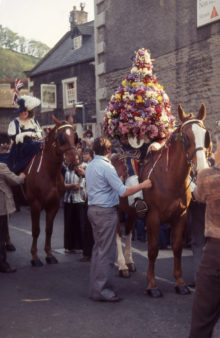 The Garland King who rides through the streets of Castleton, Derbyshire, at the head of a procession, completely disguised in a garland of flowers which is later affixed to a pinnacle on the parish church tower, can have little connection with the Restoration, even though he dresses in Stuart costume.
The Garland King who rides through the streets of Castleton, Derbyshire, at the head of a procession, completely disguised in a garland of flowers which is later affixed to a pinnacle on the parish church tower, can have little connection with the Restoration, even though he dresses in Stuart costume.
He is perhaps a kind of Jack in the Green and the custom may have transferred from May Day when such celebrations were permitted again after having been banned by the Puritans.
The public holiday, Oak Apple Day, was formally abolished by the Anniversary Days Observance Act 1859, but the date retains some significance in local or institutional customs.
Events still take place at Upton-upon-Severn in Worcestershire, Aston on Clun in Shropshire, Marsh Gibbon in Buckinghamshire, Great Wishford in Wiltshire (when villagers gather wood in Grovely Wood), and Membury in Devon. The day is generally marked by re-enactment activities at Moseley Old Hall, West Midlands, one of the houses where Charles II hid in 1651.
Fownhope, Hereford have an ongoing tradition in the celebration of Oak Apple Day. The Fownhope Heart of Oak Society organize an annual event, where members of the society gather at the local pub and march through the village holding flower and oak leaf decorated sticks, whilst following the society banner and a brass band. The march goes first to the church for a service, and then to houses who host refreshments.
The Heart of Oak Society was previously a friendly society, but had to reform in 1989 to keep the tradition going. Although Oak Apple Day celebrations have decreased in popularity and knowledge, Fownhope has managed to keep the event going, increasing in popularity and turn-out every year.
At All Saints’ Church, Northampton a statue of Charles II is wreathed at noon every Oak Apple Day, followed by a celebration of the Holy Communion according to the Book of Common Prayer.
At some Oxford and Cambridge colleges a toast is still drunk to celebrate Oak Apple Day.
Oak Apple Day is also celebrated in the Cornish village of St Neot annually. The Vicar leads a procession through the village, he is followed by the Tower Captain holding the Oak bough. A large number of the villagers follow walking to the Church. A story of the history of the event is told and then the Vicar blesses the branch. The Tower Captain throws the old branch down from the top of the tower and a new one is hauled to the top.
Everyone is then invited to the vicarage gardens for refreshments and a barbecue. Up to 12 noon villagers wear a sprig of “red” (new) oak and in the afternoon wear a sprig of “Boys Love” (Artemisia abrotanum); tradition dictates that the punishment for not doing this results in being stung by nettles.
What is an Oak Apple?
An oak apple is a mutation of an oak leaf caused by chemicals injected by the larvae of certain kinds of gall wasp laying an egg which becomes a larva inside the gall. In some parts of the country it is known as a “shick-shack.”
Oak apples (or galls) were also used to divine the future or to check if a child had been bewitched. Some of the meanings of what was found inside are as follows:
- An ant – plenty of grain to come
- A spider – ‘pestilence among men’
- A white worm or maggot – ‘murain of beasts’
- A flying worm – war
- A creeping worm – a scarce harvest
- A turning worm – plague
People would also wear oak bark and galls woven into balls as healing charms.
Source: Wikipedia
